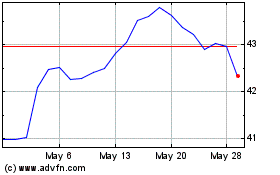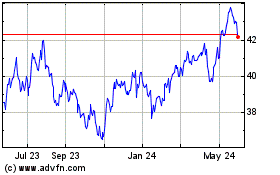As American markets continue to struggle thanks to a number of
political issues and growth concerns, many investors have looked
beyond U.S. shores to potentially better investment opportunities.
Yet with Europe still questionable and major emerging markets like
China struggling, some have turned to smaller—and often
overlooked—markets in other regions of the world for growth in
these uncertain times.
This has turned out to be a great decision as some markets in
Latin America and Southeast Asia are still chugging along despite
the developed market concerns and some weakness in the few trillion
dollar economies that are in the developing world. In particular,
one country has stands out for both its strong economy and for how
little most American investors know about the nation; the
Philippines.
Philippines in Focus
The island nation of about 95 million people has been crushing
the competition so far this year with its market greatly
outperforming broad emerging market benchmarks in the year-to-date
period. A number of trends have been responsible for this continued
surge in the market both from a domestic perspective and in terms
of exports as well.
The relatively undeveloped country has become a favorite
destination of firms looking for cheap outsourcing in a country
with a large and young population where English is a popular
language. This segment, along with the electronics, automotive, and
aerospace sectors, has combined with a weak peso to give the
country a more optimistic consumer (read 3 Emerging Market ETFs
Protected from Global Events).
In fact, the Philippines, according to Nielsen, recently came in
second place for a global consumer confidence survey, just being
edged out by Asian emerging markets India and Indonesia. Meanwhile
a recent interest rate cut could also help to spur growth and keep
the peso at a reasonable level in the future, suggesting that as
long as inflation stays under control, the country’s economic
condition could continue to improve.
The weaker currency and the strong diversity of manufacturing in
the country has also helped the Philippines to become a stronger
exporter, a pretty remarkable feat considering the developed market
woes at this time. Recent reports showed that September
exports were 22.8% higher in dollar terms than in the year ago
period, while month-over-month, they increased by 26% (see Buy
These Emerging Asia ETFs to Beat China, India).
"The country's merchandise exports growth momentum remains
robust despite significant threat posed by the crisis in the Euro
area and lethargic state of the US economy," Trade Undersecretary
Cristino Panlilio said, suggesting that the often overlooked
country has shown incredible resilience despite the broadly
uncertain market around the globe.
Thanks to these positive trends in the economy, and a recent
move by Moody’s to push the nation just one notch below investment
grade, it could be time to look to the nation for investment.
How to Play
While the broad market is still small and few Philippines
focused securities are traded in the U.S., investors still have an
ETF option to target the country in diversified form; the
iShares SMCI Philippines Investable market Index Fund
(EPHE).
This product, which tracks MSCI Philippines Investable Market
Index, has been easily beating out broad emerging market ETFs like
EEM or VWO, thanks to some of the
points highlighted above. EPHE is up more than 41% YTD while EEM
and VWO both have added less than 16% on the year, while the one
year look is even more favorable to EPHE, suggesting that the
product has shown a decent history of strong outperformance.
Still, despite these gains, the ETF is relatively unpopular as
just $150 million is invested in EPHE. However, the product does
have solid volume over 150,000 shares a day so bid ask spreads look
to be relatively tight for the fund, suggesting that total costs
will not be much more than the fund’s stated 59 basis point expense
ratio (read Three Overlooked Emerging Market ETFs).
Investors should also note that the fund has a pretty favorable
sector breakdown, and unlike many emerging market ETFs, this one
does not allocate a huge amount to financials. Instead, industrials
take the top spot at 29%, followed by real estate (21%), financials
(17%), and utilities (13%).
Additionally, the ETF is relatively spread out from an
individual company look even though the fund has just 41 stocks in
its basket. Top stocks include SM Investments (10%), Ayala Land
(7.5%), and Philippine Long Distance Telephone (6.6%), while all of
the top ten has at least 3.6% of assets.
So not only are the underlying fundamentals for the Philippines
quite solid but the ETF represents a decent pick on its own as
well. While it is true the product might not offer up much in the
way of yield—just under 1%-- its performance has more than made up
for that, especially when comparing it to broad emerging market
ETFs in recent time frames (see Three Emerging Market ETFs to Limit
BRIC Exposure).
Lastly, the fund also currently receives a favorable Zacks ETF
Rank of 2 or ‘Buy’ so we are expecting it to continue to outperform
over the next few months as well. Given all this, it could be time
for more investors to take a closer look at this often overshadowed
market, particularly if it can continue to surge higher even in the
face of global economic woes and broad market uncertainty.
Want the latest recommendations from Zacks Investment Research?
Today, you can download 7 Best Stocks for the Next 30
Days. Click to get this free report >>
Follow @Eric Dutram on Twitter
Long VWO
ISHARS-EMG MKT (EEM): ETF Research Reports
ISHARS-MS PH IM (EPHE): ETF Research Reports
VIPERS-M EM MKT (VWO): ETF Research Reports
To read this article on Zacks.com click here.
Zacks Investment Research
Want the latest recommendations from Zacks Investment Research?
Today, you can download 7 Best Stocks for the Next 30 Days. Click
to get this free report
iShares MSCI Emerging Ma... (AMEX:EEM)
Historical Stock Chart
From Dec 2024 to Jan 2025

iShares MSCI Emerging Ma... (AMEX:EEM)
Historical Stock Chart
From Jan 2024 to Jan 2025
